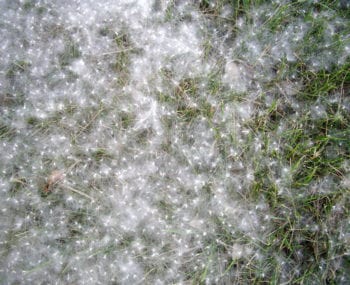Frozen Evaporator Coil in Carmel, Indiana Air Conditioner
By: Brian Schutt | June 30, 2015
If you’ve ever come home to an air conditioner not cooling, you may be familiar with the situation that a Homesense client in Carmel, Indiana, dealt with this week — a frozen evaporator coil in their air conditioner.
The home was a few degrees higher than usual, but they were unsure when exactly the temperature started to rise. The air from the supply registers was moderate at best, and the outdoor air conditioner (a.k.a. the condenser) was running still, indicating a still-functioning air conditioning system.
Frozen Evaporator Coil in Carmel, Indiana
Next, our client checked inside the house, at the air conditioner’s evaporator coil. Depending on the make of your system—upflow, downflow, or horizontal—the evaporator coil sits in a different location. But regardless of the location, a frozen coil looks the same—the copper refrigerant line exiting the coil shows signs of freezing.
Causes of a Frozen Evaporator Coil
As we have discussed before when looking at frozen air conditioners, there are three main causes of a frozen evaporator coil.
- Low refrigerant levels in air conditioning system.
- Low airflow from blocked return air duct or old air filter.
- Failing or failed blower motor in furnace.
Frozen Evaporator Coil Caused by Low Freon
After checking the filter and confirming that airflow was moving, our customer experience specialist advised the client to leave the furnace blower ON and shut OFF the cooling function of the thermostat. We recommend this process to thaw a frozen evaporator coil.
With the system fully thawed, our certified HVAC technician then performed an extensive diagnostic check on the air conditioning system to determine the issue. Our Carmel, Indiana client’s issue was that the 12-year-old system was low on freon.
When a system this old reports low freon levels, it indicates a leak somewhere within the refrigeration system. We always advise customers with a refrigerant leak in their air conditioning system to think about refrigerant like “air in a cars tire, rather than gas in its tank.” Refrigerant does not just disappear over time. If it has been functional and then becomes dysfunctional, there is a leak somewhere.
Leak Test the Air Conditioning System
Understandably, our client was somewhat frustrated because they had invested in preventative maintenance. To their credit, the system was in great shape apart from this refrigerant leak. Because of the life of their system, our client elected to have Homesense perform a leak test on the system to see where the freon was escaping.
As luck would have it for this client, our electronic leak detector alerted the technician that the most significant leak in the system was at the piston that channeled refrigerant into the coil. With a minimal amount of work to replace that piston and pressure test the system, the client’s air conditioner was functional again in a short amount of time.
![clean cottonwood snow from air conditioner indianapolis]()

![]()



